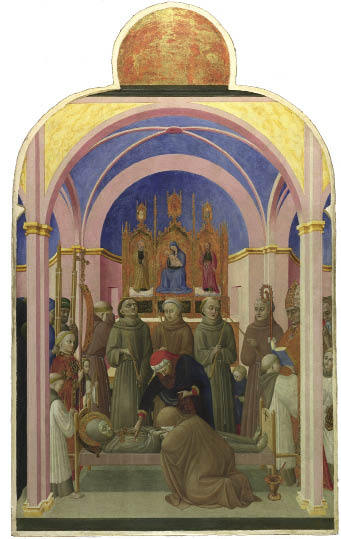The basement galleries of the Sainsbury Wing are darker than ever for this intriguing redisplay of some of the oldest paintings in the National Gallery. The atmosphere attempts to recreate the penumbral gloom of church and chapel in which these paintings were originally to be seen, before impoverished religious foundations flogged them to dealers and collectors. Nearly all these pictures come from the NG’s permanent collection, but it is always revealing to see things exhibited in new ways, and this exhibition is no exception.
For a change, it focuses our attention on the nuts and bolts of altarpieces — how they were commissioned, constructed, framed, positioned — and in so doing sheds much light on them as devotional objects. This approach, however, has little to add to the aesthetic appreciation or understanding of the works on display. Happily, there are some beautiful paintings among the demonstration pieces.
The real eye-catcher in Room 1 is Sassetta’s ‘Funeral of St Francis’ (1437–44), painted in egg tempera on poplar panel. The pink and blue architecture, trimmed with gold, is gently radiant, and provides an uplifting setting for the human drama. One friar hides his head in grief, another turns his gaze to heaven, a third looks out at the viewer while a fourth fixes his eyes upon the bishop. This panel is one of seven scenes from St Francis’s life originally intended to surround a painting of the saint in glory. But does this information enhance our appreciation of the individual painting? It adds to our knowledge but not, I think, to our pleasure.
We are used to seeing great paintings (which could properly be called fragments of altarpieces) out of context, such as Piero della Francesca’s ‘Baptism of Christ’.








Comments
Join the debate for just £1 a month
Be part of the conversation with other Spectator readers by getting your first three months for £3.
UNLOCK ACCESS Just £1 a monthAlready a subscriber? Log in